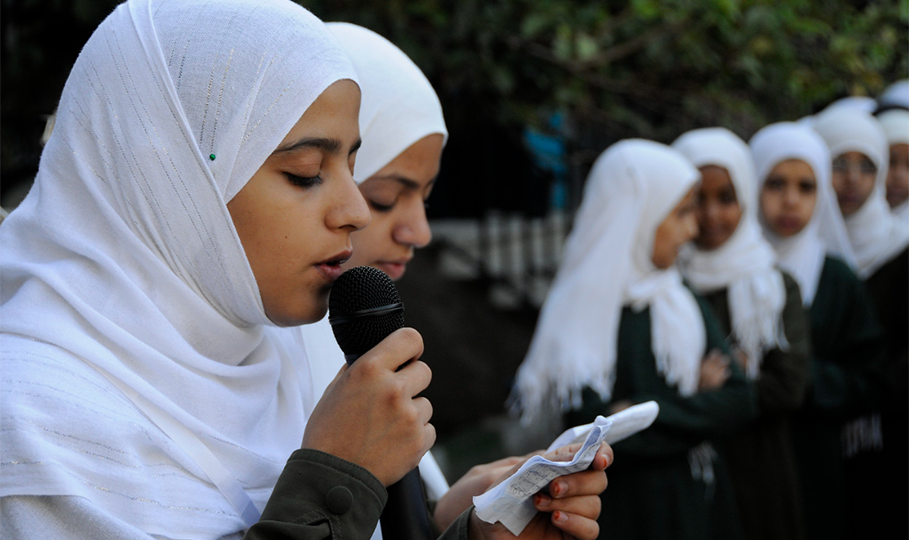Risk Mitigation: Identification and Preparation

Identifying and understanding project-related SEA/SH risk factors as they interact with other contextual risk factors is critical for developing appropriate prevention and mitigation measures in project design. MFIs identify the types and level of SEA/SH risks in operations in order to develop mitigation and response measures proportional to the identified risks. Risk identification begins in the preparation phase and is monitored and updated throughout project implementation. In this section, you will find MFIs resources, tools and guidance on identifying SEA/SH risks and designing mitigation measures.
-
World Bank Good Practice Note on Addressing SEA/SH in Human Development Operations (PDF)
This GPN (First Edition, September 2022) explores how SEA/SH risks may arise in human development (HD) operations, describes process and responsibilities related to risk screening and assessment, and provides guidance on key mitigation measures. It applies to World Bank Investment Project Financing (IPF) that include activities related to health, nutrition, population, education, social protection, and jobs. It introduces tools and approaches to addressing SEA/SH risk in HD operations that reflect emerging good practice consistent with the key Environmental and Social Framework (ESF) principles of proportionality and appropriateness.
-
World Bank Good Practice Note on Addressing SEA/SH in IPF with Major Civil Works (PDF)
The GPN (Third Edition, October 2022) focuses on prevention, mitigation, and response to SEA/SH in Investment Project Financing (IPF) with civil works. The GPN includes recommendations of key SEA/SH risk mitigation and response measures, including those related to addressing risks through procurement, codes of conduct, training, and other tools (pages 26-42). There are links to sample TORs, CoCs, action plans and other materials, as well as a table with recommended mitigation actions according to risk. In its third edition (2022), the GPN strengthens guidance on how to best identify and address risks of SEA faced by children.
-
World Bank Good Practice Note Annex 1: Codes of Conduct (PDF)
Annex 1 of the Good Practice Note (GPN) includes example Codes of Conduct for contractors.
-
World Bank Note on Managing the Risks of Adverse Impact on Communities from the Temporary Project-Induced Labor Influx (PDF)
This note provides guidance on identifying, assessing, and managing the risks of adverse social and environmental impacts that are associated with the temporary influx of labor resulting from Bank supported projects. The note contains guiding principles and recommendations to be considered as part of the design and implementation of projects with civil works that require labor from outside the project’s area of influence. This note does not introduce new requirements but rather seeks to provide concrete guidance on how to approach temporary labor influx within the environmental and social assessment process.
-
Inter-American Development Bank Blog on SEA/SH in Development
As part of its new Environmental and Social Policy Framework (ESPF), the IDB has included a standard on gender equality -the Environmental and Social Performance Standard 9 (ESPS 9)- that addresses, among other issues, SGBV risks that may arise in the context of a development project. This blog focuses on the importance of acknowledging that projects bring people and social change to the communities in which they operate and, in doing so, may exacerbate existing risks.
-
Inter-American Development Bank Blog On Gender Equality and Nuanced Risk Management
This blog analyzes how gender-related impacts, including any form of sexual and gender-based violence such as sexual exploitation and abuse, might disproportionately affect women and people of diverse sexual orientations and gender identities in infrastructure projects. To address these impacts, the IDB's Environmental and Social Policy Framework (ESPF), which includes the Gender Equity Environmental and Social Performance Standard (ESPS 9), seeks to identify possible risks and impacts, and introduce effective measures to avoid, prevent or mitigate these risks, eliminating the possibility of creating inequalities o reinforcing pre-existing ones.
-
Addressing Gender and Gender-Based Violence in IFC Projects (PDF)
This document provides more information on how the IFC’s Environmental and Social Performance Standards and Corporate Governance methodology, support gender equality and help combat gender-based violence.
Procurement

Our commitment to prevent and mitigate the risk of SEA/SH includes various contractually binding measures including compliance with procurement standards. In this section you will find resources on procurement requirements that have strengthened measures to address SEA/SH risks in operations.
-
African Development Bank Standard Bidding Document for Large Works (PDF)
This document addresses sexual exploitation and abuse, and sexual harassment (SEA/SH) in contractor E&S management plans, and includes a code of conduct. (August 2020)
-
IFAD Project Procurement Guidelines on Sexual Harassment, Sexual Exploitation and Abuse (PDF)
Sexual harassment, sexual exploitation, and abuse are addressed in this IFAD’s procurement document (Section III. J.)
-
IFAD Procurement Handbook (PDF)
Expanding upon – and when the applicable agreement provides for it, and in line with – IFAD’s Project Procurement Guidelines, this handbook includes best practice advice on all elements of the procurement process for any IFAD-financed operation. It also ensures commitment to a safe work environment, free of harassment (including sexual harassment) and sexual exploitation and abuse in its activities and operations. This is stipulated in the IFAD Policy on Preventing and Responding to Sexual Harassment, Sexual Exploitation, and Abuse.
-
IFC Good Practice Note on Managing Contractors’ Environmental and Social Performance (PDF)
IFC clients are responsible for ensuring that their contractors are aware of and meet IFC’s Performance Standards relevant to their activities, as well as the World Bank Group Environment, Health, and Safety Guidelines. E&S opportunities and issues of concern include all aspects of IFC's performance standards, which include, but are not limited to, occupational health and safety, community health and safety including sexual exploitation and abuse (SEA) and gender-based violence (GBV) prevention, labor conditions, safety and security, resettlement, biodiversity, cultural heritage, stakeholder engagement, procurement, and supply chain management.
-
World Bank Good Practice Note Annex 4: Addressing SEA/SH in the Contractor’s ESMP (PDF)
This GPN section details how the Contractor’s Environmental & Social Management Plan (C-ESMP) builds upon a project’s environmental and social risk assessment to establish the contractor’s accountability for managing SEA/SH risks and establishing appropriate prevention and mitigation measures.
-
World Bank Standard Procurement Documents SEA/SH Obligations
This web page provides an overview of steps taken by the World Bank to strengthen requirements for contractors to manage SEA/SH risks, including remedies for non-compliance. Revised documents, applicable to work projects deemed as high-risk of SEA/SH that apply the Bank’s Standard Procurement Documents (SPDs), guide borrowers to assess bidders’ competence to comply with SEA/SH obligations.
Grievance Mechanism

Safely and ethically receiving, documenting and managing SEA/SH allegations in a way that prioritizes survivors’ rights, well-being and dignity, require a different approach than other types of concerns raised through project-level grievance mechanisms. SEA/SH sensitive Grievance Mechanisms (GMs) should create safe, enabling spaces for survivors to report SEA/SH incidents, while offering a confidential, ethical, survivor-centered response when cases come forward. In this section, you will find MFIs guidelines and emerging good practices on SEA/SH sensitive GMs.
-
World Bank Good Practice Note on Addressing SEA/SH in IPF with Major Civil Works (PDF)
The World Bank’s GPN on Investment Project Financing (IPF) with Major Civil Works includes a section on Grievance Mechanism (GM), beginning at page 42, detailing the WB’s requirements for the GM that must be “proportionate to the potential risks and impacts of the project.” Risks involving accessing the GM are detailed, as are the management of the GM, multiple channels for making a complaint, and information that should and should not be requested through the GM.
-
World Bank Good Practice Note on Addressing SEA/SH in Human Development Operations (PDF)
The World Bank’s good practice note (GPN) on human development (HD) operations includes a section on grievance mechanisms and referrals for survivors (paragraph 67 and following). Building on the guidance provided by the GPN for IPF with civil works, the HD GPN elaborates principles and good practices that are important to take into account when designing and rolling out SEA/SH sensitive GMs, including the critical need to ensure survivors are connected to local, quality care.
-
Addressing Gender-Based Violence and Harassment: Emerging Good Practice for the Private Sector
Jointly commissioned by the IFC, the European Bank for Reconstruction and Development (EBRD), and the CDC Group, this guidance note outlines emerging practices in addressing gender-based violence and harassment (GBVH) in operations and investments. These practices are drawn from recent experience in the private sector, as well as a larger body of work from the non-profit sector. Section 5.3 details grievance mechanisms (GMs) and reporting mechanisms, including examples of GMs and reporting tools that are inclusive. Annex 8 details KPIs that their effectiveness.
-
RSH How to Design and Manage Community-Based Complaints Mechanisms (PDF)
This how-to note on creating community-based complaints mechanisms (CBCMs) provides quick tips on how to start the process and include voices from the communities. It has been designed by the Resource & Support Hub and UK Aid.
-
Interagency Standing Committee (IASC) Safe and Accessible Reporting
Includes the IASC’s guidance on community-based complaint mechanisms CBCMs, available in French, Spanish, Arabic and English. This includes a detailed best practice guide on the creation and establishment of inter-agency CBCMs, awareness raising about them, and monitoring, mostly targeting NGOs.
-
IFC Toolkit to Support Firms to Develop and Manage Community-Based SEA/SH Grievance and Feedback Mechanisms
This toolkit is intended to support private sector companies to amend existing community-based grievance and feedback mechanisms or develop new mechanisms, that are designed to receive and effectively manage reports of sexual exploitation, abuse and harassment in addition to other types of grievances and feedback.
-
Inter-American Development Bank and IDB Invest Grievance Mechanism
The IDB´s Environmental and Social Grievance Mechanism is a new tool that allows individuals and/or groups to submit complaints directly to the IDB as related to a project’s environmental and social issues, including sexual and gender-based violence complaints. The management grievance mechanism of IDB Invest is a new channel for individuals or groups to submit complaints related to environmental, social, or corporate governance issues of a project financed or being considered for financing by IDB Invest. Interested parties can submit claims online.
-
World Bank Grievance Redress Service (GRS)
The Grievance Redress Service (GRS) is an avenue for individuals and communities to submit complaints directly to the World Bank if they believe that a Bank supported project has or is likely to have adverse effects on them, their community, or their environment.
-
Integrating Sexual Exploitation, Abuse, and Harassment Reporting and case handling into project Grievance Redress Mechanisms Good Practice Note For ADB-Financed Projects with Civil Works
This good practice note is intended to guide the Asian Development Bank (ADB), executing and implementing agencies, consultants, and contractors in setting up, adapting, and managing grievance redress mechanisms assigned to receive reports on sexual exploitation, abuse, and harassment in ADB-financed projects with civil works. The proposed reporting mechanisms and case handling processes in this publication are based on good practices by international development agencies and multilateral development banks. This good practice note may be used independently but is better understood when read together with the Good Practice Note on Addressing Sexual Exploitation, Abuse and Harassment in ADB- Financed Projects with Civil Works.
Prevention

Multilateral Financial Institutions (MFIs) support clients to prevent SEA/SH from occurring, in addition to mitigation and response actions. MFIs draw upon expertise in prevention of gender-based violence and violence against women and girls in designing SEA/SH prevention strategies. In this section, you will find various resources on SEA/SH prevention.
-
Violence Against Women and Girls Resource Guide
This guide provides information on the characteristics and consequences of VAWG, including the operational implications this type of violence can have in several priority sectors of the IDB and WBG. It also offers guidance on how to integrate VAWG prevention and the provision of quality services to violence survivors within a range of development projects. Lastly, it recommends strategies for addressing VAWG in policy and legislation, as well as sector programs and projects.
-
Inter-American Development Bank Blog: Five Steps to Prevention
This blog outlines concrete actions to be taken when designing and implementing development projects to prevent SEA/SH in projects, considering that a project may aggravate existing gender inequalities.
Response

Global best practice recognizes that it is essential to respond appropriately to a survivor’s complaint by respecting their choices. This means that the survivor’s rights, needs, and wishes are prioritized in every decision related to the incident. A survivor of SEA/SH who has the courage to come forward, must always be treated with dignity and respect. Every effort should be made to support the survivor's safety and well-being. In this section, you will find relevant guidance and global best practices for responding to SEA/SH complaints safely and ethically, in line with a survivor-centered approach.
-
World Bank Good Practice Note: Working with Gender-Based Violence Service Providers, Annex 5 (PDF)
Annex 5 details how to work with GBV service providers, including international standards for the minimum basic package of services, activities that may benefit from a GBV service provider, and contracting considerations with service providers.
-
NO MORE Global Directory
This is a resource on how to help survivors, including bystanders, using a survivor-centered approach, though focused on other forms of GBV and domestic violence. It includes country-specific sexual assault and domestic violence hotlines and other resources.
-
CHS Alliance SEA/SH Investigations Guidance (PDF)
The guide provides humanitarian and development organizations with best-practice advice on how to conduct professional investigations into reports of sexual misconduct, while emphasizing the importance of putting the needs of survivors at the heart of investigation processes.
Monitoring

Multilateral Financial Institutions (MFIs) and external agencies monitor SEA/SH mitigation measures continuously throughout project implementation. Monitoring encompasses indicators to track implementation and guidance for on-site monitoring visits. In this section, you will find resources including templates and tips on how to conduct safe and effective monitoring of SEA/SH risk management measures.
-
Addressing Gender-Based Violence and Harassment: Emerging Good Practice for the Private Sector
Section 7 of this resource on monitoring includes how to do safe and effective monitoring and examples of types of monitoring, such as appropriate survey questions and feedback forms. Annex 8 includes KPIs that could be incorporated into monitoring.
-
MOPAN Compilation of PSEA Indicators (PDF)
To enhance prevention of and response to sexual misconduct, MOPAN integrated SEA/SH indicators into its performance assessments of multilateral organizations as an integral part of performance and accountability.
-
RSH Tips for Conducting Safe Monitoring Visits (PDF)
This document provides the top 10 tips for conducting safe project monitoring visits.
-
Inter Agency Standing Committee PSEA Country-Level framework
This is a template that provides the minimum requirements to review and analyze the effectiveness, impact, and progress of measures to prevent and respond to sexual exploitation abuse country-wide.
Private Sector Materials
Multilateral Financial Institutions (MFIs) that work with private sector partners have developed guidance to support various industries and sectors in addressing SEA/SH in their MFI-funded projects.
-
Guidance Note on Addressing Gender-Based Violence and Harassment, Private Sector Emerging Good Practices
Jointly commissioned by the IFC, the European Bank for Reconstruction and Development (EBRD), and CDC Group, this guidance note outlines emerging practices in addressing gender-based violence and harassment (GBVH) in operations and investments. These practices are drawn from recent experience in the private sector, as well as a larger body of work from the non-profit sector. The guidance provides an opportunity to engage with stakeholders to refine practices as those in the private sector collectively gain implementation experience. Available in English, Arabic and Russian.
-
Write and Implement a Workplace Policy for Prevention of Sexual Harassment
IFC’s “How to Support Your Company to Write and Implement a Workplace Policy for Prevention of Sexual Harassment” provides ‘How To’ steps for integrating the systematic prevention of sexual harassment into human resources policies.
-
Sector Briefs on Emerging Private Sector Practices on Addressing GBVH
In addition to the Guidance Note on Addressing Gender-Based Violence and Harassment: Emerging Good Practice for the Private Sector, sector-specific briefs, available in this section, provide targeted guidance on addressing these risks in key sectors, including transport, construction, and manufacturing. Jointly produced by ERBD, CDC and IFC, these documents are available in multiple languages.
- Construction (PDF)
- Public Transport (PDF)
- Manufacturing (PDF)
- Hotels, catering and tourism (PDF)
- Education (PDF)
- Agribusiness (PDF)
IDB Invest
IDB Invest has developed a number of guidelines on preventing sexual exploitation, and addressing gender and gender-based violence in the private sector:
-
Preventing Sexual Exploitation, A Practical Guide to the Private Sector (PDF)
This guide provides a methodology that aims to help companies identify and mitigate SEA/SH risks, and contribute to protecting children and adolescents and other vulnerable groups against sexual exploitation. The guide offers direction to private companies in adopting measures to protect children, adolescents, and other vulnerable groups from sexual exploitation in various Latin American and the Caribbean countries.
-
Infographic: Understanding and Addressing Gender and Gender-Based Violence (PDF)
The IDB Invest sustainability policy recognizes that people may be more vulnerable to negative project impacts based on gender. This policy requires clients to identify and address gender-related risks and to ensure inclusion of all genders in the consultation process in accordance with IDB's performance standards. This factsheet helps IDB Invest clients to identify, understand, and address gender-related risks.
-
The Role of the Private Sector in Gender-Based Violence and Harassment Prevention in Latin America & Caribbean
This publication aims to provide IDB Invest clients with an overview of how women, girls, and transgender people can be affected by violence in the realm of development projects; it also shares examples of preventative measures to address those risks. A robust gender plan foresees continuously screening for risks and contextual changes, and the constant update of such measures.
IFC
-
Supporting Companies to Develop and Manage Community-Based SEA/SH Grievance and Feedback Mechanisms
This toolkit is intended to support private sector companies to amend existing community-based grievance and feedback mechanisms or develop new mechanisms that are designed to receive and effectively manage reports of sexual exploitation, abuse and harassment in addition to other types of grievances and feedback.
MFIs SEA/SH Policies and Guiding Documents
Multilateral Financial Institutions (MFIs) have a host of resources and policies that relate to addressing SEA/SH in their development operations. SEA/SH policies are included here, and may also be included in other sections, depending on the issue areas incorporated in the policy.
IFAD Policy:
The International Fund for Agricultural Development (IFAD) seeks to ensure a safe working environment free of harassment, including sexual harassment, and free of sexual exploitation and abuse (SEA), in its activities and operations.
-
IFAD Policy to Preventing and Responding to Sexual Harassment, Sexual Exploitation and Abuse
This document defines the obligations of IFAD staff and those individuals holding a work contract with IFAD with respect to sexual harassment and SEA. It sets out IFAD’s rules and procedures and approach in preventing and responding to sexual harassment and SEA.
WB Guidance:
-
Environmental and Social Framework
Every community where the World Bank (WB) has operations includes people who have experienced or will experience GBV. The Environmental and Social Framework (ESF), which applies to all WB Investment Project Financing (IPF) on or after October 1, 2018, is an important policy foundation for the Bank’s commitment to addressing SEA/SH. The World Bank has developed Good Practice Notes aligned with the Environmental and Social Standards - ESS1, ESS2, ESS4, ESS5, ESS7 and ESS10 - and other guidance for task teams supporting WB Borrowers in identifying, assessing, and mitigating SEA/SH risks.
-
Good Practice Note on Addressing SEA/SH in IPF with Major Civil Works (PDF)
This GPN was developed to assist task teams in identifying risks of SEA/SH that can emerge in IPF involving civil works contracts, and to advise borrowers on how to best manage such risks. It applies to IPF in any World Bank Global Practice that involves major civil works.
-
Good Practice Note on Addressing SEA/SH in Human Development Operations (PDF)
This GPN covers how SEA/SH risks may arise in Human Development (HD) Operations, describes the Bank’s responsibilities to screen HD Operations for SEA/SH risk, and provides guidance on key mitigation measures.
-
Working Together to Prevent Sexual Exploitation and Abuse: Recommendations for World Bank Investment Projects (PDF)
This report from 2017 by an independent gender-based violence (GBV) task force comprised of external experts provides guidance on how to strengthen World Bank systems, tools, and processes to prevent and mitigate the risk of sexual exploitation and abuse, as well as other forms of GBV in World Bank-supported infrastructure and other area-based investment projects. It provides a set of recommendations in identifying and addressing GBV risks.
-
World Bank Group Gender Strategy 2024 – 2030: Accelerate Gender Equality to End Poverty on a Livable Planet
IDB Policy:
In this section you will find the Inter-American Development Bank’s new environmental and social policy framework (ESPF). The new IDB framework explicitly addresses the risks of sexual and gender-based violence, exploitation, discrimination, and abuse in projects that IDB supports. The ESPF has a dedicated, stand-alone standard on gender equality with provisions for people of all genders.
-
Environmental and Social Policy Framework (ESPF)
The IDB’s new Environmental and Social Policy Framework (ESPF) includes the Gender Equity Environmental and Social Performance Standard (ESPS 9). This standard requires that all projects analyze possible risks and impacts on gender equity and, if identified, requires the adoption of measures to avoid, minimize, mitigate and/or compensate the negative impacts with mechanisms that prevent gender inequality from proliferating.
-
ESPS 9 Guidelines on Gender Equality (PDF)
The IDB’s Environmental and Social Performance Standard (ESPS 9) recognizes gender equality as a fundamental human right, as established in numerous international agreements and conventions, and the national legal frameworks of most countries in the Latin America and Caribbean region. ESPS 9 guidelines explain the requirements and offers good practices to address gender equality.
-
Guide to Support the Design and Implementation of Measures to Prevent and Address Discrimination Based on Gender and Sexual Orientation
This guide is part of the inputs intended to support the full implementation of the new Environmental and Social Policy Framework of the Inter-American Development Bank, particularly the Gender Equity Environmental and Social Performance Standard. The recommendations and practices outlined here are useful resources to consider in two fundamental instances: 1) in the risk analysis of potential disproportionate negative impacts that may arise as a result of the operations financed by the Bank for LGBTQ people; and 2) in the design of prevention, mitigation, and compensation measures that may be required.
IDB Invest Policy:
In this section you will find a brief summary of the purpose of IDB Invest environmental and social sustainability policy and its implementation manual.
-
Sustainability Policy (PDF)
The purpose of the IDB Invest environmental and social sustainability policy, effective December 15, 2020, is to enhance the environmental and social sustainability of the investment projects financed by IDB Invest through the application of robust environmental and social risk management standards. It also conveys IDB Invest’s commitment to sustainable development as the foundation of its approach to risk management, as well as its development mandate.
-
Implementation Manual (PDF)
The IDB Invest implementation manual describes each of the policies and standards that together constitute the IDB Invest sustainability framework, with objectives, principles, and requirements that apply to IDB Invest and its private sector clients in the area of environmental and social risk management. The manual seeks to provide guidance on how clients may consider different factors and apply judgment consistently in different settings based on core principles and requirements in the IDB Invest sustainability framework.
MIGA Policy:
-
MIGA Gender
On this page you will find a summary of MIGA’s gender strategy implementation plan, which identifies opportunities for increased gender actions at three strategic levels: corporate, client engagement, and partnerships. The page also highlights why the private sector has a critical role to play in narrowing gender gaps, and showcases MIGA's Gender Leadership Award (GLA), which recognizes private sector leaders who have a proven track record in furthering gender equality.
ADB Guidance:
-
Environmental and Social Framework
This framework sets out how ADB and its borrowers and clients need to protect people and the environment from projects’ potential adverse impacts. More Information
-
Good Practice Note on Addressing Sexual Exploitation, Abuse, and Harassment in ADB-Financed Projects with Civil Works
Designed to identify and tackle sexual exploitation, abuse, and harassment (SEAH) in ADB-financed projects with civil works, this Good Practice Note sets out recommendations to prevent, mitigate, and manage SEAH risks in the workplace and project communities.
AfDB Policy:
-
Integrated Safeguards Systems
The African Development Bank shows great commitment to addressing SEA/SH and Gender Based Violence in its projects and operations. This commitment is aligned with its boarder agenda to promote gender equality and empower women and girls rights across Africa, recognizing the barriers to achieving these goals. The updated Integrated Safeguards System (April 2023) considers that through its Operational Standards, the Bank is committed to ensuring, at any time during the operations’ life cycle, the protection of all stakeholders against reprisals, SEAH, GBV or discrimination on the grounds of sexual orientation and gender identity.
EBRD Policy
-
Environmental and Social Policy
The new Environmental and Social Policy is reinforcing EBRD’s commitment to sustainability in the projects it finances. This new policy introduces enhanced measures to mitigate environmental and social risks, while helping ensure a lasting positive impact across the EBRD Bank’s regions
